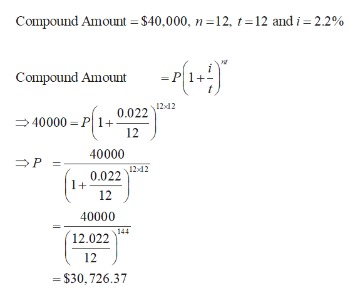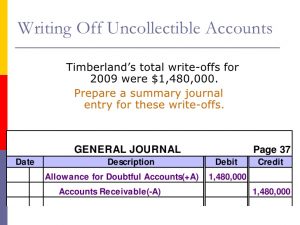Typically a balance sheet, cash-flow statement, and income or profit and loss statement are included. It’s not the flashiest part of running a small business, but analyzing the financial data from your small business on a regular basis is vital to the health of your company. Maintaining the proper financial statements helps you determine your business’ financial position at a specific point in time and over a specified period. https://www.intuit-payroll.org/ Add an account statement column to your COA to record which statement you’ll be using for each account–cash flow, balance sheet, or income statement. For example, balance sheets are typically used for asset and liability accounts, while income statements are used for expense accounts. Examples of accounts that often require an adjustment include wages payable, accumulated depreciation and prepaid office supplies.
Experience-Based Tips for Managing Accounts Receivable (When Doing It Yourself)
All you have to do is fill in your business and financial information and watch the numbers add up! You’re one step closer to understanding the financial health of your company when you use our financial report templates. By using a cash flow statement, you distinguish between cash received from a loan, funds owed in accounts receivable and accounts payable, and cash received from a customer for a sale, for example.
- The preparation and presentation of this information can become quite complicated.
- Just as with a profit and loss, the standard balance sheet is fine, but I recommend pulling the balance sheet detail in QuickBooks to send to your tax preparer.
- Management is interested in the cash inflows to the company and the cash outflows from the company because these determine the company’s cash it has available to pay its bills when due.
- A balance sheet is like a photograph; it captures the financial position of a company at a particular point in time.
- Private companies may keep a valuation statement as they progress toward potentially going public.
- It involves the preparation and presentation of financial statements, along with supplementary disclosures, in a standardized format that follows applicable accounting principles and regulatory requirements.
How to Determine the Value for a Business
Less-experienced investors might get lost when they encounter a presentation of accounts that falls outside the mainstream of a so-called “typical” company. Please remember that the diverse nature of business activities results in a diverse set of financial statement presentations. This is particularly true of the balance sheet; the income statement and cash flow statement are less susceptible to this phenomenon. Financial statements are written records that convey the financial activities of a company. Financial statements are often audited by government agencies and accountants to ensure accuracy and for tax, financing, or investing purposes. For-profit primary financial statements include the balance sheet, income statement, statement of cash flow, and statement of changes in equity.
You’re our first priority.Every time.
Knowing how to work with the numbers in a company’s financial statements is an essential skill for stock investors. The meaningful interpretation and analysis of balance sheets, income statements, and cash flow statements to discern a company’s investment qualities is the basis for smart investment choices. The balance sheet is the financial statement that tracks the firm’s financial accounting equation position at a given point in time, typically the last day of the accounting cycle. It’s a statement showing what your business owns (assets) and what it owes (liabilities). Your assets must equal your liabilities plus your equity or owner’s investment. The balance sheet shows your firm’s financial position with regard to assets and liabilities/equity at a set point in time.
QuickBooks Online resources
The last line of your income statement, called the bottom line, shows you net income or loss. Your balance sheet is a big indicator of your company’s current and future financial health. You can also use your balance sheet to help you make guided financial decisions. Liabilities are debts you owe to other individuals, such as businesses, organizations, or agencies. Your liabilities can either be current (short-term) or noncurrent (long-term).
You may need to post adjusting entries before you start closing your accounts. Adjusting entries are generally for unrecognized income or expenses for the period. I got a university degree to learn how financial statements work and how those numbers come together to give you a comprehensive financial picture.
Quarterly statements, as the name implies, are issued every quarter and only include financial data from that three-month span of time. Likewise, semi-annual statements include data from a six-month span of time. Prudent investors should only consider investing in companies with audited financial statements, which are a requirement for all publicly-traded companies. Perhaps even before digging into a company’s financials, an investor should look at the company’s annual report and the 10-K. Much of the annual report is based on the 10-K, but contains less information and is presented in a marketable document intended for an audience of shareholders.
Retained earnings refers to the net profit of a company after it makes its dividend and other shareholder payments—earnings which are, therefore, “retained” by the company. DUAL is purely for the convenience of people who require that all SELECT statements should have FROM and possibly other clauses. We’re holding special passport fairs all across the United States to help you get your passport more easily. If you want us to reimburse you for a lost supporting document, you must contact us within 90 days of the date which we mailed your passport.
Company debt and equity levels can also be examined to determine whether companies are properly funding operations and expansions. You just need to understand what each financial statement tells you and where the information in those statements comes from. Accounting software takes care of all the mechanical tasks like preparing the trial balance, calculating the net income, and drawing the statement of cash flows. The balance sheet provides an overview of a company’s assets, liabilities, and shareholders’ equity at a specific time and date. The date at the top of the balance sheet tells you when this snapshot was taken; this is generally the end of its annual reporting period. Financial statements are summary-level documents that provide details about a company’s financial position at a given point in time.
Some statements need footnote disclosures while other can be presented without any. Details like this generally depend on the purpose of the financial statements. Your chart of accounts is a living document for your business and because of that, accounts will inevitably need to be added or removed over time.
Since the company did not generate any non-operating income, its operating income was its net income balance. An income statement shows a company’s revenue and expenses for a period of time. It provides information relating to returns on investments, risks, financial flexibility, and operation capabilities. Yes, you can use QuickBooks financial reporting software to help generate your financial and accounting reports seamlessly. Since these interim statements cover a smaller time period, they also track less financial history. This is why annual financial statements are generally more reliable and better represent a company’s true financial position.
The cash flow statement then takes net income and adjusts it for any non-cash expenses. Then cash inflows and outflows are calculated using changes in the balance sheet. The cash flow statement displays the change in cash per period, as well as the beginning and ending balance of cash. Prudent investing practices dictate that we seek out quality companies with strong balance sheets, solid earnings, and positive cash flows. Although financial statements provide a wealth of information on a company, they do have limitations.
International companies may use a similar but different set of rules called International Financial Reporting Standards (IFRS). An often less utilized financial statement, the statement of comprehensive income summarizes standard net income while also incorporating changes in other comprehensive https://www.accountingcoaching.online/material-requirements-planning/ income (OCI). Other comprehensive income includes all unrealized gains and losses that are not reported on the income statement. This financial statement shows a company’s total change in income, even gains and losses that have yet to be recorded in accordance with accounting rules.
IFRS aims to harmonize accounting practices globally and enhance the comparability of financial statements. The primary components of the income statement include revenues, cost of goods sold, gross profit, operating expenses, and net income. The income statement also shows any revenue during the time period in question from assets, such as gains on sales of equipment or interest income. As you can see all four general-purpose financial statements are prepared and presented here.
The sub-ledger accounts are then aggregated into five general ledger categories (income, expenses, assets, liabilities, and equity). Recording transactions is the gateway through which all the information needed to prepare financial statements flows. Sales, purchases, returns—every transaction impacts your financial statements. You may see large companies prepare financial statements following GAAP (Generally Accepted Accounting Principles) and IFRS (International Financial Reporting Standards). Financial statements are the business world’s equivalent of a medical check-up. They offer a comprehensive overview of an organization’s financial condition, including details about its profitability, cash flow, and overall worth.






